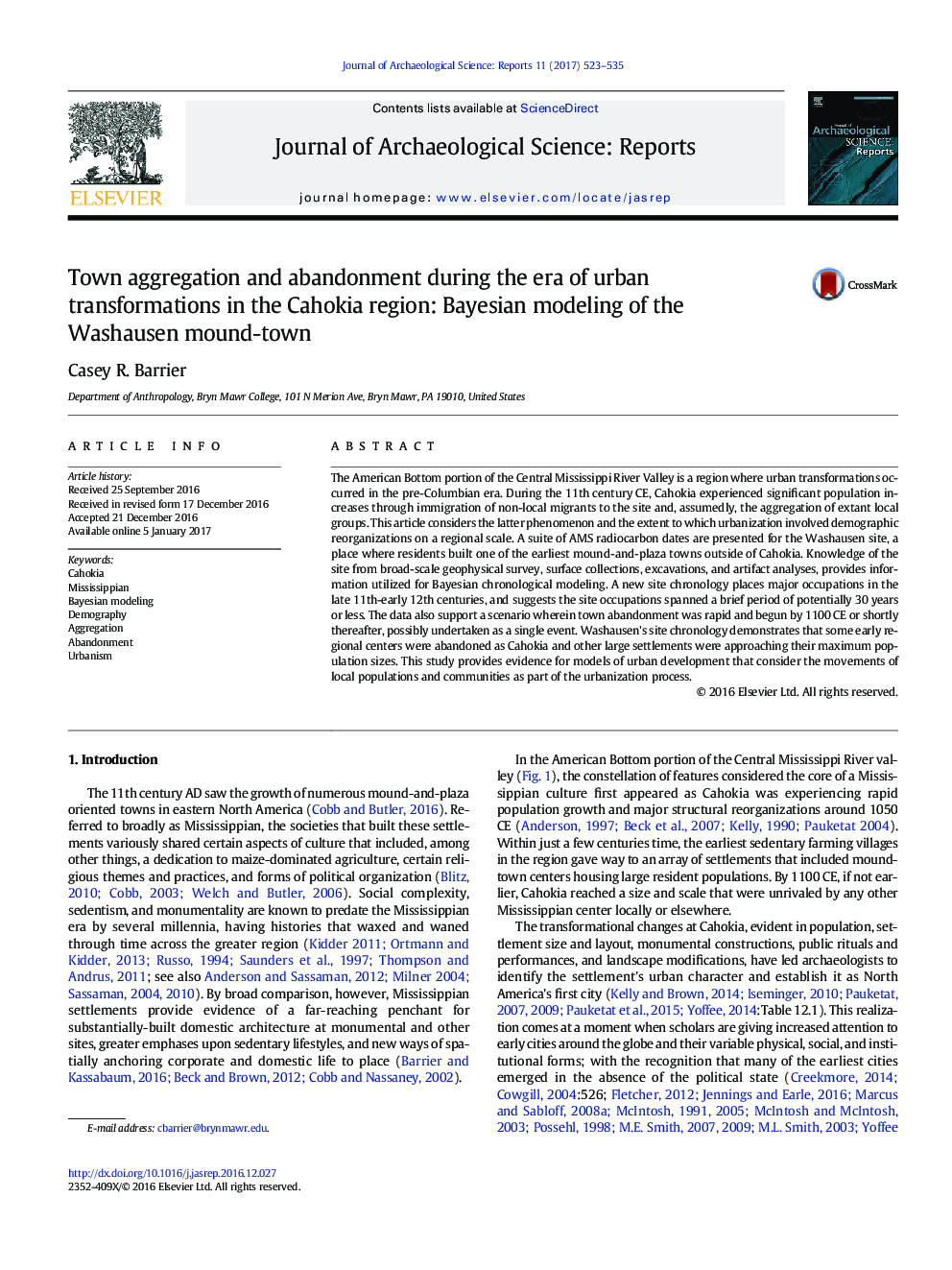| Article ID | Journal | Published Year | Pages | File Type |
|---|---|---|---|---|
| 5112584 | Journal of Archaeological Science: Reports | 2017 | 13 Pages |
Abstract
The American Bottom portion of the Central Mississippi River Valley is a region where urban transformations occurred in the pre-Columbian era. During the 11th century CE, Cahokia experienced significant population increases through immigration of non-local migrants to the site and, assumedly, the aggregation of extant local groups. This article considers the latter phenomenon and the extent to which urbanization involved demographic reorganizations on a regional scale. A suite of AMS radiocarbon dates are presented for the Washausen site, a place where residents built one of the earliest mound-and-plaza towns outside of Cahokia. Knowledge of the site from broad-scale geophysical survey, surface collections, excavations, and artifact analyses, provides information utilized for Bayesian chronological modeling. A new site chronology places major occupations in the late 11th-early 12th centuries, and suggests the site occupations spanned a brief period of potentially 30Â years or less. The data also support a scenario wherein town abandonment was rapid and begun by 1100 CE or shortly thereafter, possibly undertaken as a single event. Washausen's site chronology demonstrates that some early regional centers were abandoned as Cahokia and other large settlements were approaching their maximum population sizes. This study provides evidence for models of urban development that consider the movements of local populations and communities as part of the urbanization process.
Related Topics
Social Sciences and Humanities
Arts and Humanities
History
Authors
Casey R. Barrier,
